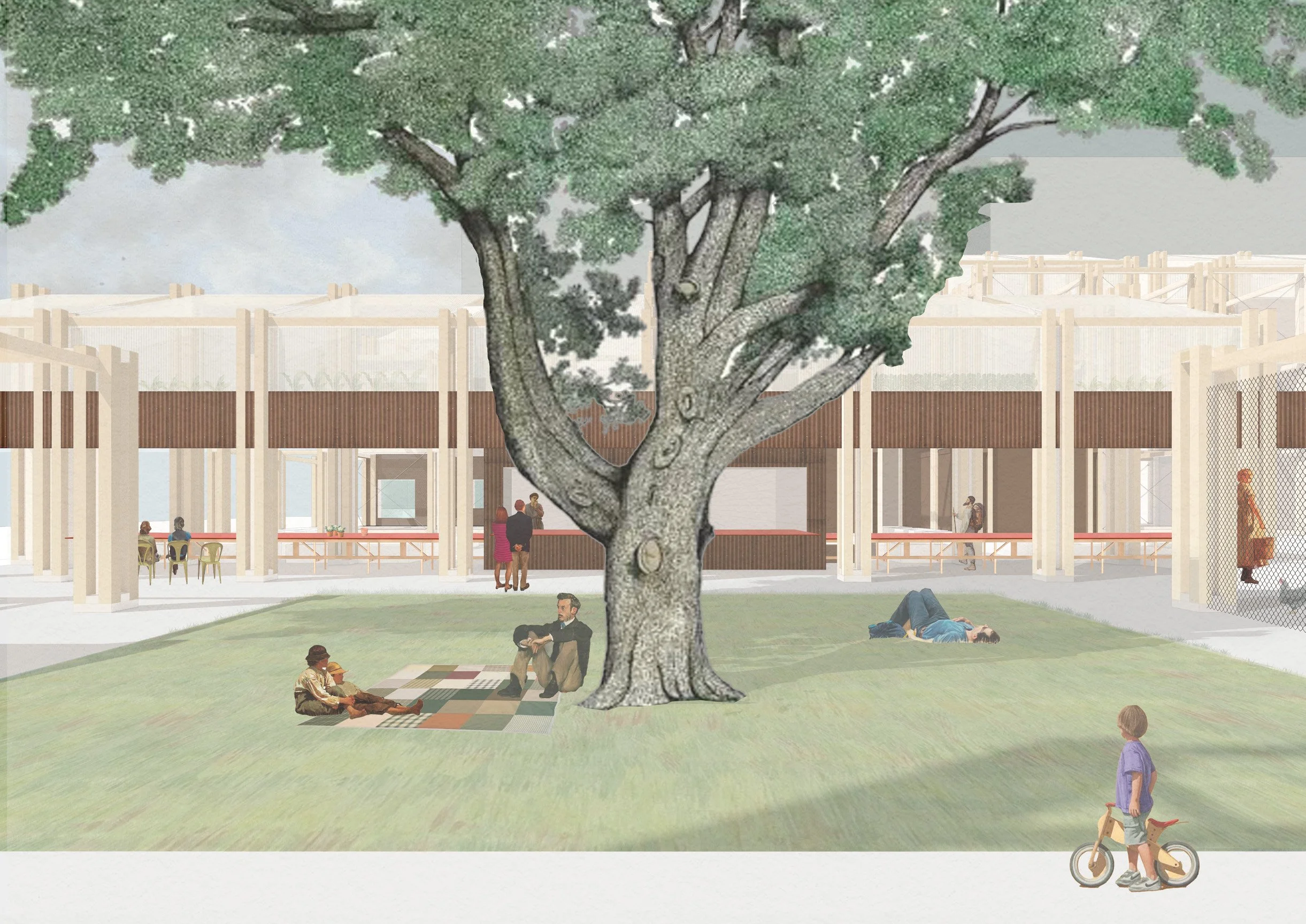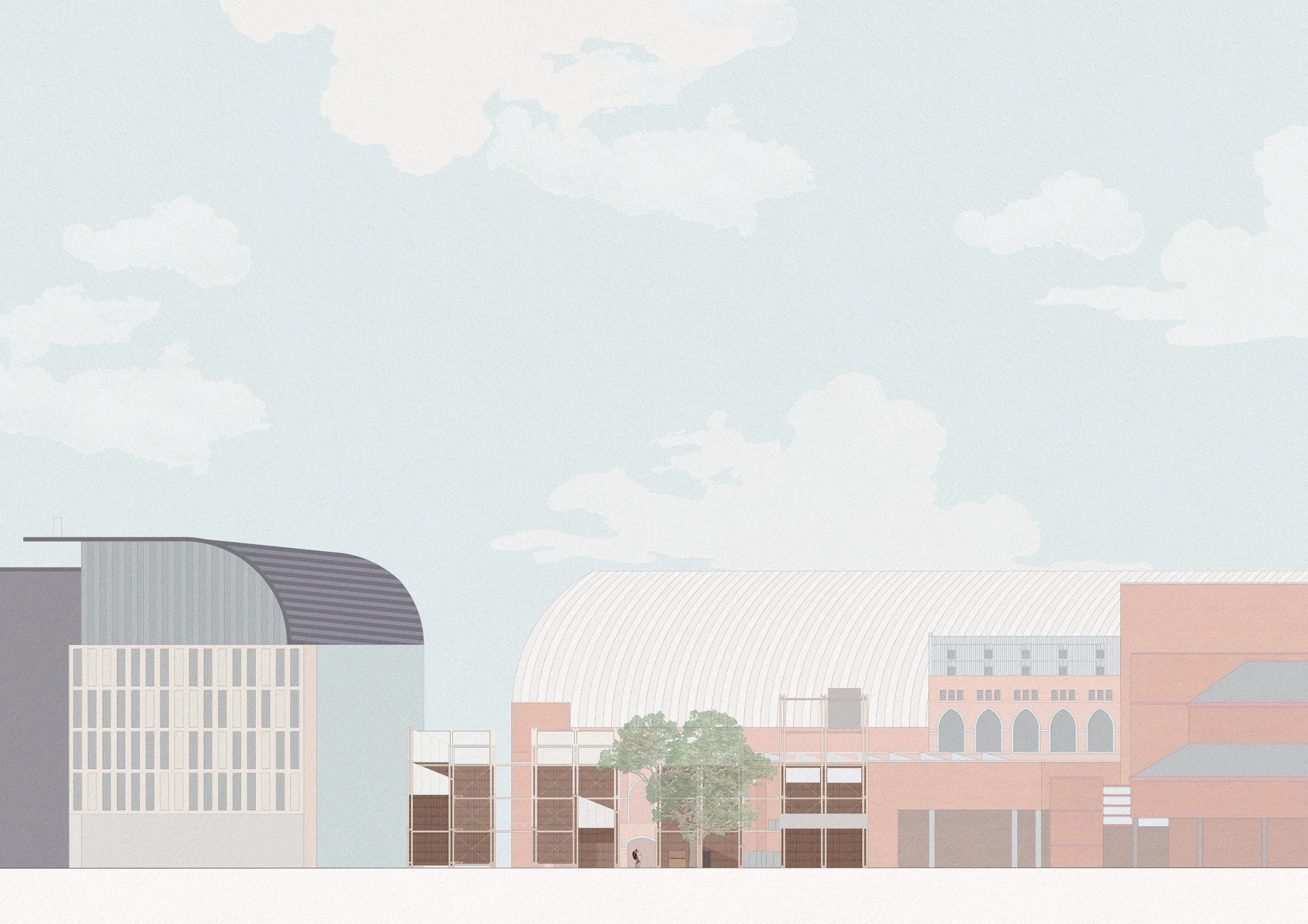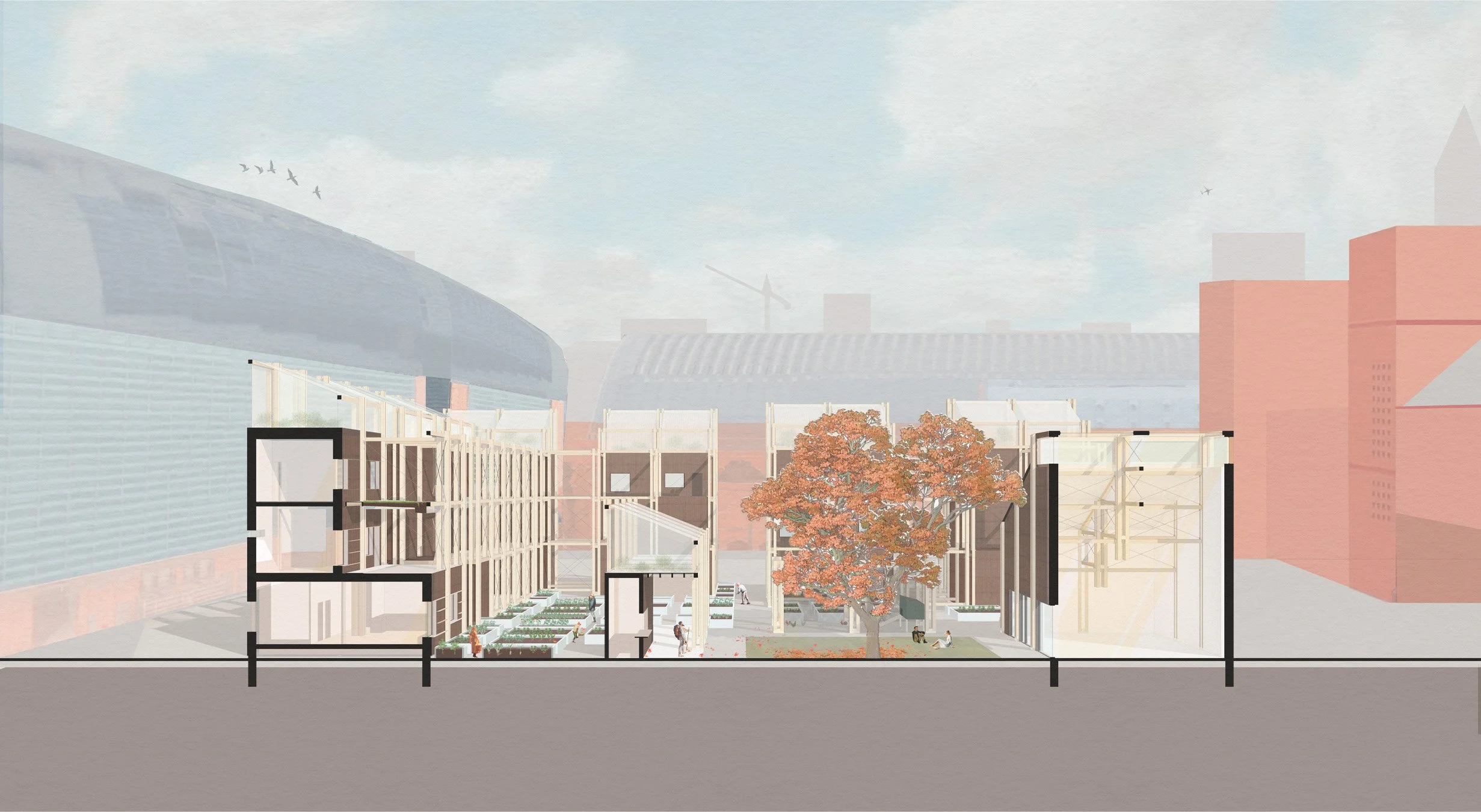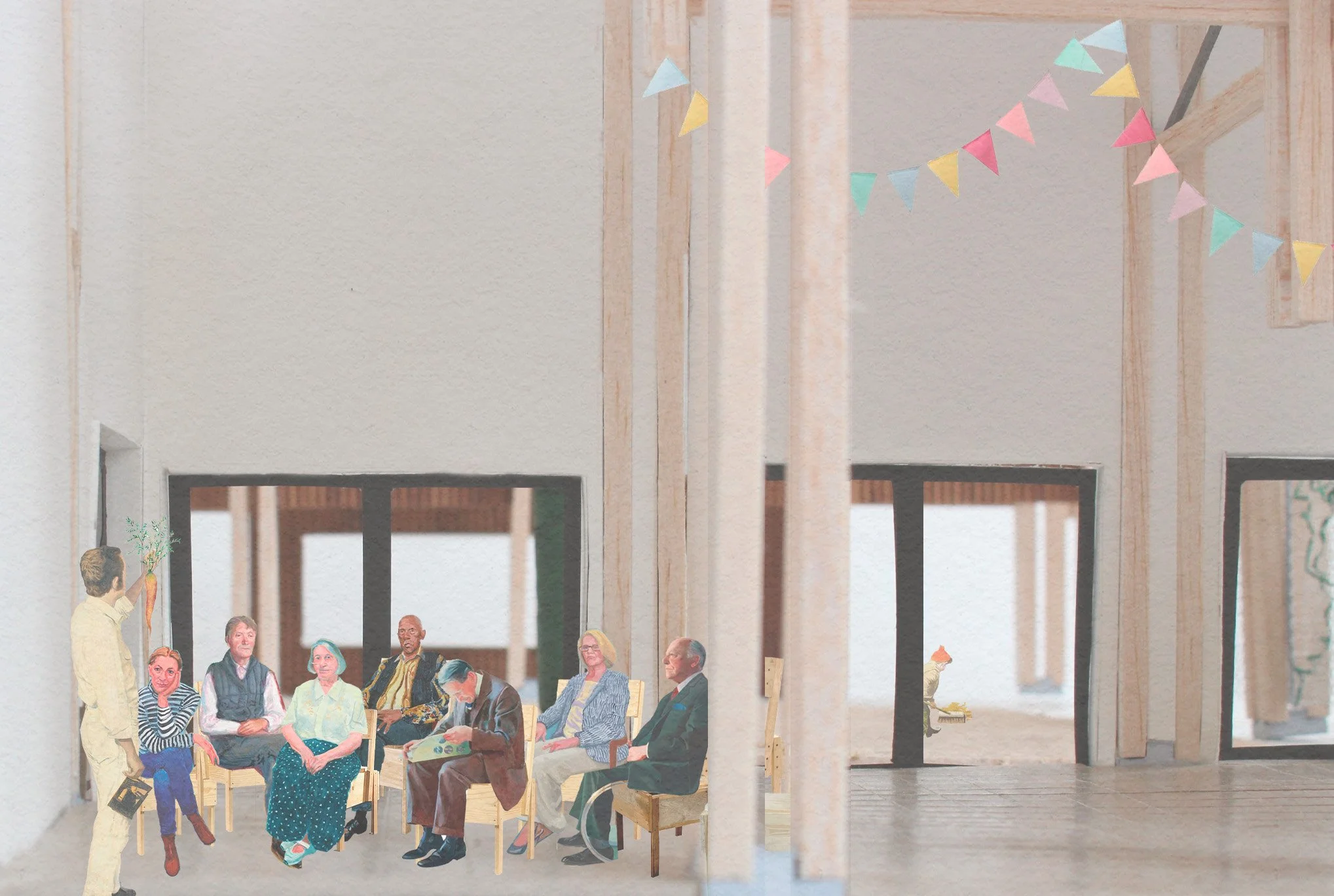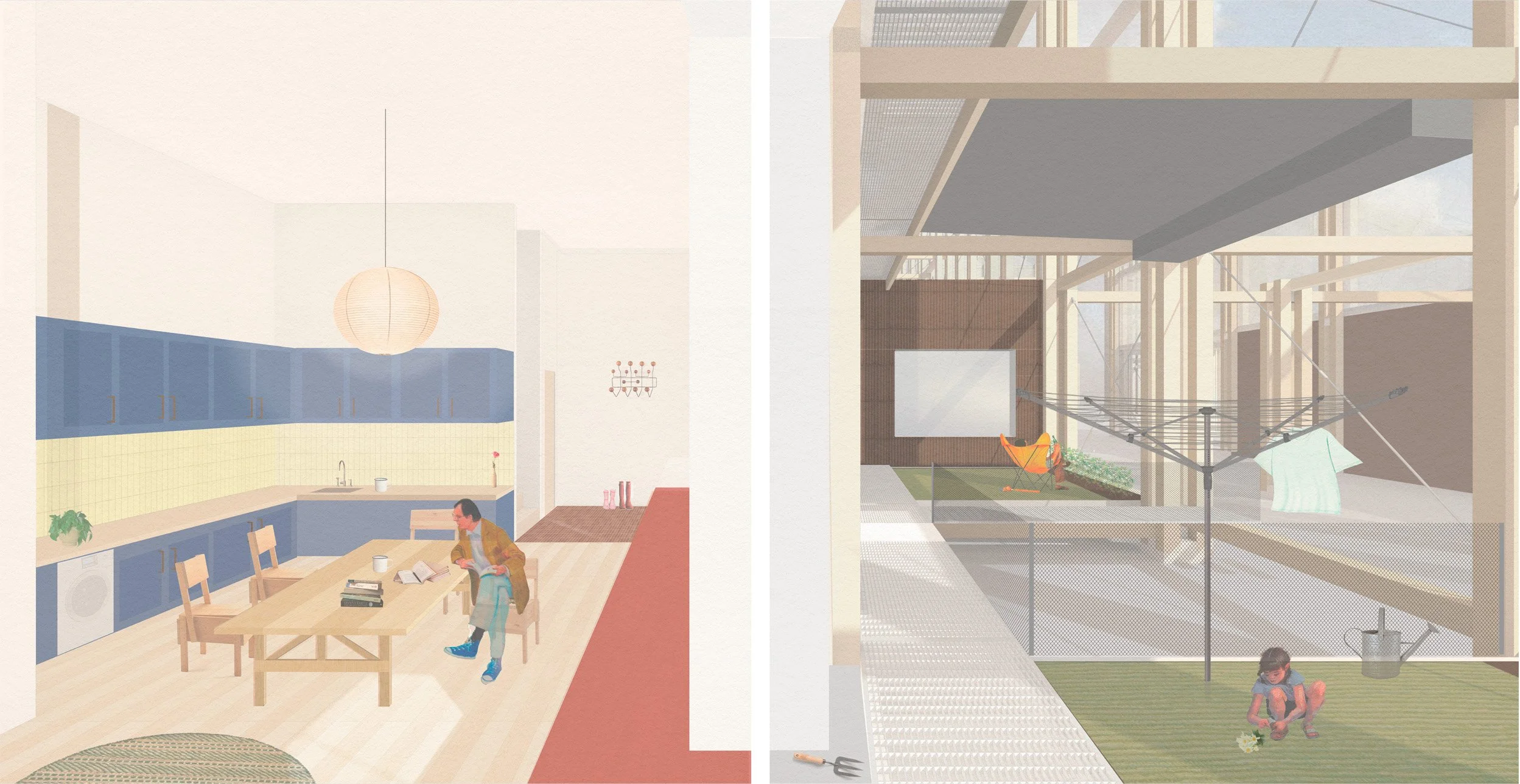Unit L - Making Housing Public
NEW BUILD: For Autonomous Affordable Communities in Kings Cross, London. Unit L - Making Housing Public explores experimental domestic architectures and the unique communities they create.
We find ourselves in Somers Town, an area of radical thinkers, non-conformists and activists and a lasting enclave for the working class in the Kings Cross area in London. We explore how to empower communities through means of assembly and how to create mixed, genuinely affordable communities, where building anew comes with a great deal of complexity. The Unit embraces the already politically activated and mobilised inhabitants to establish a new common ground.
Within this context, Unit L students situate themselves within two much debated ideologies; firstly, that housing and access to thriving communities should be a right, not a privilege, and so the connection between profit and the home as a commodity should be decoupled; and secondly, that the political agenda for economic growth is unbreakably linked to Earth’s resources, energy use and CO2 emissions. Therefore, current values of ‘more’, both at a societal and individual level must re-imagined, and a stance of ‘less’ and the principles of ‘degrowth’ may present an alternative to break our current path to a climatic and biodiversity breakdown. We are at undeniable environmental and inequality tipping point and we must act radically and quickly!
Our approach is prototypical and innovative in nature and consider the entire process as a catalyst for bringing a community together, providing rich and social programmes that address the politics of living and encourage participation and autonomy, asking how communities can radically shape the development of their homes as well as society at large.
Tutors: Unit Leads: Mark Rist & Natalie Savva, Unit Technology Tutor: Alex Otiv
Structural Engineer: Rebecca Bubb, Illustration workshop: Arran Semple, Tuckey Design Studio, Photography workshop: Matthew Blunderfield, Guest Critics: Maliha Haque, Gwenaël Jerrett, Josh Marriner, Practice visit: Kyle Buchanan, Archio
Students: Year 2 Students: Veronica Andreou, Harvey Benatt, Ali Mert Celebi, Tara Chu, William Davies, Holly Lucas, Dhani Lynch, Marziya Marziya, Danielle Senanu, Alkistis Triantafyllopoulou, India Weisser
Year 3 Students; Ftoun Abou Kerech, Maxim Capel, Anan Dobbs, Carys Esau-Buitrago, Claudia Gulliford, Ella Hannyngton, Clara Houghton, Oliver Kenniston, Molly Layton, Demarrie Lewis, Connor Stickland, Kyle Welfare
The Urban Village
Molly Layton
In a time when the community of London is being overcome by large and powerful infrastructure, the project aims to reimagine Somers Town, Camden, as an urban village, defined by self-sufficiency and independence. The proposal is a model for community-led regeneration, creating new skill-sharing networks so that Somers Town can regain a new sense of freedom.
The design emerges from a study of the site and its social history, industrial past and its current tensions of food poverty and urban isolation. Inspired by a study of a rural village, at the heart of the project lies a new village green, a central common for the community. Around the green are a series of timber-framed buildings that sit on a 5m grid, designed with a panellised modular system to allow adaptability. The design is intentionally simple in construction to support life rather than dictate it.
Historical aspects of a village have been reimagined: the former church is transformed into a community hall, a space for teaching and a social hub for activity. Opposite, the traditional pub is repurposed as a marketplace and café, where residents can sell produce, baked goods and hand-crafted items. Growing classes, harvest festivals, and repair workshops are community engaging events that are held within the Urban Village.
The project resists the reliance on large businesses and instead proposes that communities should work together to support each other. Its design offers a new model for urban living, one rooted in old knowledge, local action and principles of living self-sufficiently.
Dwelling Plan
Housing Axo
MarketView
NorthEastElevation
Notice Board
Perspective Section
Plan
Street View
Village Hall View
Wall View
The Duality of Space: The People's Archive for Living, Making, and Remembering. A home for Somers Town in an ever-changing city.
Ella Hannyngton
A new model for social housing embedded in a public arts centre. Located in Somers Town, a historically working-class neighbourhood now under pressure from rapid development between Euston and King’s Cross, the People’s Archive preserves the area’s identity by reasserting its legacy: making art a part of everyday life.
Re-connecting with the legacy that working-class people deserve art in everyday life, led by sculptor Gilbert Bayer and upheld by the depth of cultural and political movements born out of Somers Town, by integrating art and performance back into mundane activities. Ordinary tasks are undertaken alongside theatre performances, music rehearsals, and art exhibitions.
Minimal private apartments are supported by generous shared spaces - communal corridors, balconies, and cultural rooms. Daily routines are blended with public interaction.
Residents access these shared spaces through private staircases that thread through the building, allowing them to inhabit and reinterpret the arts centre on their own terms. The line between domestic life and cultural performance is intentionally blurred. Acts of cooking, resting, and socialising become visible through large windows and openings carved into the concrete structure, transforming the building into a living archive of community and care. In a place where housing is increasingly unaffordable, this project offers a new kind of permanence: one rooted in the collective memory and creativity of simply belonging.
A tower dwelling
Activities in the arts centre
Environmental section
Life spilling out onto the balconies
Minimal housing floor plan
Mundane acts are framed through windows and holes in the concrete
The Theatre - where domesticity and performance overlap
Theatre programme detailling each performers' associations and contributions with Somers Town
Vertical circulation in Wollsteoncraft tower


